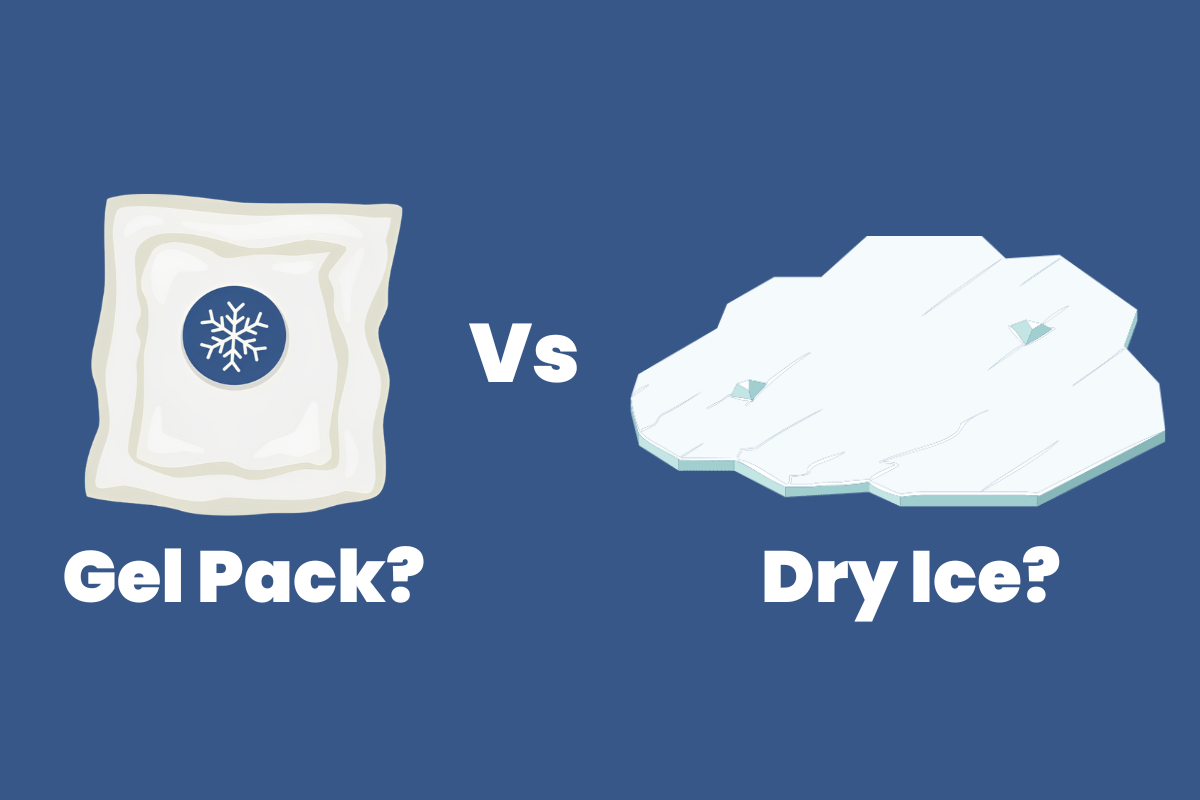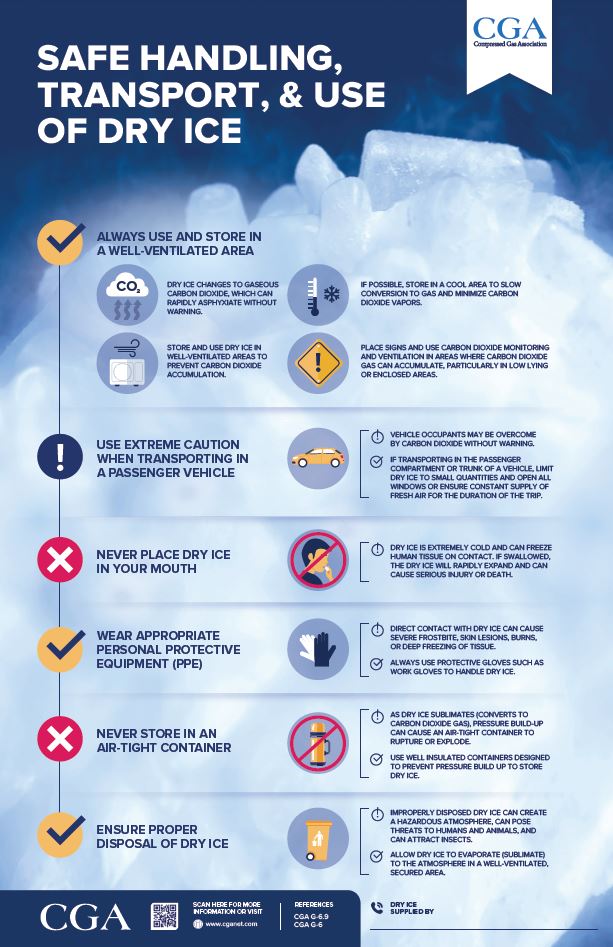Dry ice is extremely cold, with a temperature of -109.3°F or -78.5°C. It sublimates into carbon dioxide gas.
Dry ice, a solid form of carbon dioxide, is widely known for its unique properties and uses. From creating spooky fog effects at Halloween parties to preserving perishable items during shipping, dry ice has a range of practical applications. Its ultra-low temperature and ability to sublimate make it a versatile tool in various industries, including food, medical, and scientific research.
In this blog post, we will explore the fascinating world of dry ice, its characteristics, safety measures, and innovative uses. Let’s dive in and uncover the chilling wonders of this extraordinary substance.
The Nature Of Dry Ice
Dry ice, made of solid carbon dioxide, is extremely cold at -109. 3°F (-78. 5°C), causing instant frostbite on contact. Its frigid temperature makes it a popular choice for various applications like preserving perishable items during transportation.
What Is Dry Ice?
Dry ice is a solid form of carbon dioxide that has a temperature of -78.5°C (-109.3°F) at standard atmospheric pressure. It is called “dry” ice because it does not melt into a liquid when it is heated; instead, it sublimates directly from a solid to a gas. This unique property makes dry ice ideal for a wide range of applications, from refrigeration to special effects in movies and theater.The Science Behind Its Cold
The science behind the coldness of dry ice is based on its extremely low temperature and sublimation process. When dry ice is exposed to warmer temperatures, it sublimates and turns into gas, which absorbs heat from its surroundings. This process, called endothermic reaction, creates a cooling effect that makes dry ice an effective refrigerant. Because of its extreme coldness, dry ice should be handled with care and in a well-ventilated area. Direct contact with skin can cause frostbite, and inhaling too much carbon dioxide gas can lead to asphyxiation. Dry ice is a fascinating substance that is widely used in various industries. Its unique properties make it an ideal choice for many applications, from refrigeration and shipping to special effects in movies and theater. Its coldness and sublimation process are the key factors that make it such a valuable resource. However, it should be handled with care due to its potential hazards. Whether you need to keep something cool or create a dramatic effect, dry ice can provide a solution that is both effective and visually stunning.Comparing Temperatures
When comparing temperatures, it’s important to understand the extreme cold of dry ice and how it differs from regular ice. Let’s explore the temperatures of dry ice and regular ice in Celsius and Fahrenheit.
Dry Ice Vs. Regular Ice
Dry ice, which is solid carbon dioxide, is much colder than regular ice. While regular ice has a freezing point of 0°C (32°F), dry ice has a temperature of -78.5°C (-109.3°F).
Extreme Cold: Measuring In Celsius And Fahrenheit
| Substance | Celsius | Fahrenheit |
|---|---|---|
| Regular Ice | 0°C | 32°F |
| Dry Ice | -78.5°C | -109.3°F |
Safe Handling Practices
When it comes to handling dry ice, it is crucial to follow safe handling practices to ensure both your safety and the integrity of the product. By adhering to proper procedures, you can avoid potential hazards and maximize the benefits of using dry ice. This section will outline the essential safety measures, including the use of personal protective equipment and proper storage and transportation methods.
Personal Protective Equipment
Wearing appropriate personal protective equipment (PPE) is essential when handling dry ice. This equipment acts as a barrier between you and the extremely cold temperatures of dry ice, protecting your skin and eyes from potential injuries. The following PPE should be worn:
- Gloves: Insulated gloves, such as thermal gloves or heavy-duty cryogenic gloves, should be worn to protect your hands from direct contact with dry ice. This will prevent frostbite or burns.
- Protective Eyewear: Safety goggles or a face shield should be worn to shield your eyes from any potential splattering or contact with dry ice. This will prevent eye injuries.
- Lab Coat or Protective Clothing: Wearing a lab coat or other protective clothing can provide an additional layer of protection against accidental contact with dry ice.
Storage And Transportation
Proper storage and transportation of dry ice are crucial to maintain its effectiveness and prevent any safety hazards. Follow these guidelines:
- Storage Containers: Dry ice should be stored in insulated containers made of materials such as Styrofoam or dry ice chests. These containers help to slow down the sublimation process and keep the dry ice in solid form for longer periods.
- Ventilation: Ensure that the storage area is well-ventilated to prevent the buildup of carbon dioxide gas, which is released as dry ice sublimates. This will help maintain safe levels of oxygen in the environment.
- Transportation: When transporting dry ice, ensure that the container is securely closed to prevent any leaks or spills. It is important to transport dry ice in a well-ventilated vehicle, as the release of carbon dioxide gas can lead to reduced oxygen levels in an enclosed space.
- Labeling: Clearly label containers with the words “Dry Ice” and include warnings about its extreme cold temperature and the need for protective equipment.
By following these safe handling practices, you can confidently handle dry ice while minimizing any potential risks. Remember, always prioritize your safety and take the necessary precautions to ensure the proper storage, transportation, and usage of dry ice.

Credit: www.quora.com
Practical Uses Of Dry Ice
Dry ice, the solid form of carbon dioxide, is widely known for its extreme cold temperature and unique properties. Its practical uses extend across various industries, from culinary applications to medical and scientific uses. Let’s explore the diverse practical uses of dry ice in different fields.
In The Culinary World
Dry ice has revolutionized the culinary world with its ability to create captivating visual effects and preserve food in a unique manner. Here are some common culinary uses of dry ice:
- Creating captivating smoking effects for cocktails and desserts
- Preserving and transporting perishable food items
- Churning ice cream without the need for traditional freezers
Medical And Scientific Applications
Medical and scientific professionals harness the extreme cold of dry ice for various critical applications. Here are some significant uses in these fields:
- Preserving medical samples during transportation
- Cooling and preserving organs for transplantation
- Creating ultra-cold environments for scientific experiments
The Magic Of Sublimation
Dry ice is a fascinating substance that showcases the captivating process of sublimation. Unlike regular ice, which melts into liquid, dry ice transforms directly from a solid to a gas, creating mesmerizing visual effects. Let’s explore the enchanting world of dry ice and the wonders of sublimation.
How Dry Ice Transforms
Dry ice, scientifically known as solid carbon dioxide, undergoes sublimation at a temperature of -78.5°C (-109.3°F). This means it transitions from a solid state to a gaseous state without passing through the liquid phase, making it an ideal choice for a variety of applications, from preserving perishable items to creating captivating visual effects.
Visual Wonders: Fog And Smoke Effects
One of the most captivating aspects of dry ice is its ability to produce thick, billowing fog and smoke effects. When dry ice is placed in water, the rapid sublimation process creates a dense fog that cascades over the surface, adding an element of mystery and drama to any setting. This visually stunning effect is often used in theatrical productions, haunted houses, and special events to create an eerie atmosphere that captivates audiences.

Credit: machphy.com
Dry Ice In Popular Culture
Dry Ice in Popular Culture has captivated audiences worldwide with its mysterious and alluring properties. Let’s explore how this unique substance has been portrayed in various forms of entertainment.
Spooky Effects In Entertainment
Dry Ice is often used in movies and theatre productions to create eerie atmospheres and spooky effects. Its dense fog-like appearance adds a chilling element to horror scenes.
Science Fiction And Beyond
In the realm of science fiction, Dry Ice has been depicted as a futuristic element with extraordinary capabilities. From spacecraft propulsion to advanced weaponry, its versatility knows no bounds.
Environmental Impact And Sustainability
Dry ice is extremely cold, with a temperature of -78. 5°C. Its environmental impact is minimal as it sublimates into carbon dioxide gas. Sustainability efforts have led to the increased use of dry ice in various industries, including food preservation and transportation, due to its low environmental impact.
Is Dry Ice Green?
Dry ice is considered environmentally friendly due to its minimal impact.Recycling And Disposal Considerations
Dry ice can be reused or safely evaporated in well-ventilated areas. Dry ice is a sustainable cooling agent that has a low carbon footprint. Dry ice sublimates into harmless gas, leaving no waste behind. It is made from recycled carbon dioxide, reducing emissions.Experiments And Diy Projects
Discover the exciting world of experiments and DIY projects with dry ice. Ready to explore the wonders of cold temperatures?
Creating Your Own Dry Ice
Learn how to create your own dry ice for experiments and fun activities.
Fun And Educational Activities
Engage in various fun and educational activities with dry ice.

Credit: www.cganet.com
Frequently Asked Questions
How Cold Is Dry Ice?
Dry ice is extremely cold, with a temperature of -109. 3°F (-78. 5°C). It is much colder than regular ice, which has a temperature of 32°F (0°C).
How Is Dry Ice Made?
Dry ice is made by pressurizing and cooling carbon dioxide gas until it turns into a solid. The gas is then released, and the solid carbon dioxide is crushed into small pellets or blocks.
Is Dry Ice Dangerous To Touch?
Yes, dry ice is dangerous to touch with bare hands. It can cause frostbite and burns. Always wear gloves or use tongs when handling dry ice, and never put dry ice in your mouth.
What Is Dry Ice Used For?
Dry ice has many uses, including preserving food during shipping, creating special effects in movies and theater productions, and cleaning industrial equipment. It can also be used in scientific experiments and for cooling beverages.
Conclusion
Dry ice is an incredibly cold substance, with temperatures reaching as low as -78. 5°C (-109. 3°F). Its unique properties make it ideal for a variety of applications, such as freezing and preserving food, creating dramatic special effects, and even in medical and scientific research.
Understanding the characteristics and precautions associated with handling dry ice is crucial to ensuring its safe and effective use. So, next time you encounter dry ice, remember its extreme coldness and handle it with care. Stay safe and enjoy exploring the fascinating world of dry ice!







